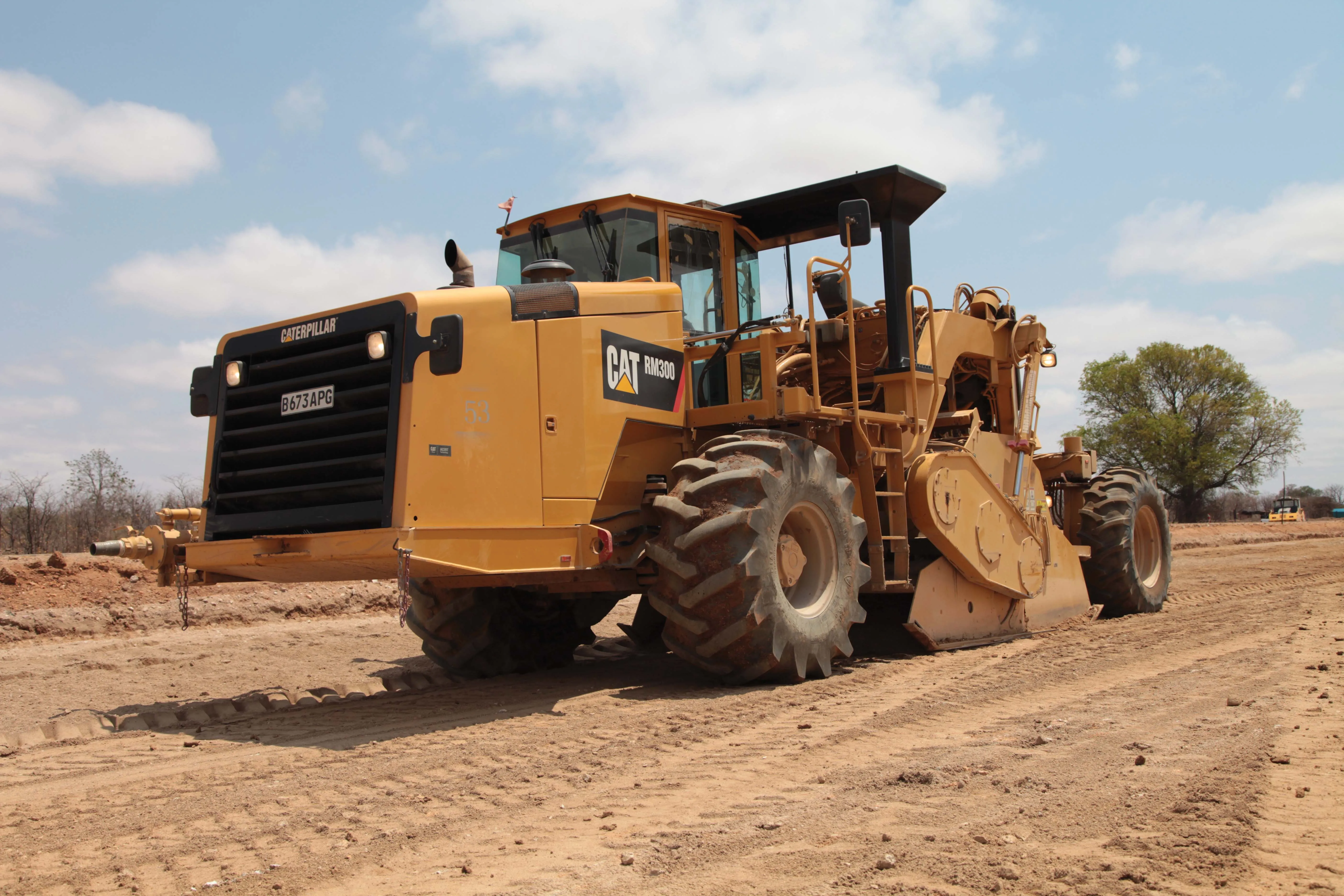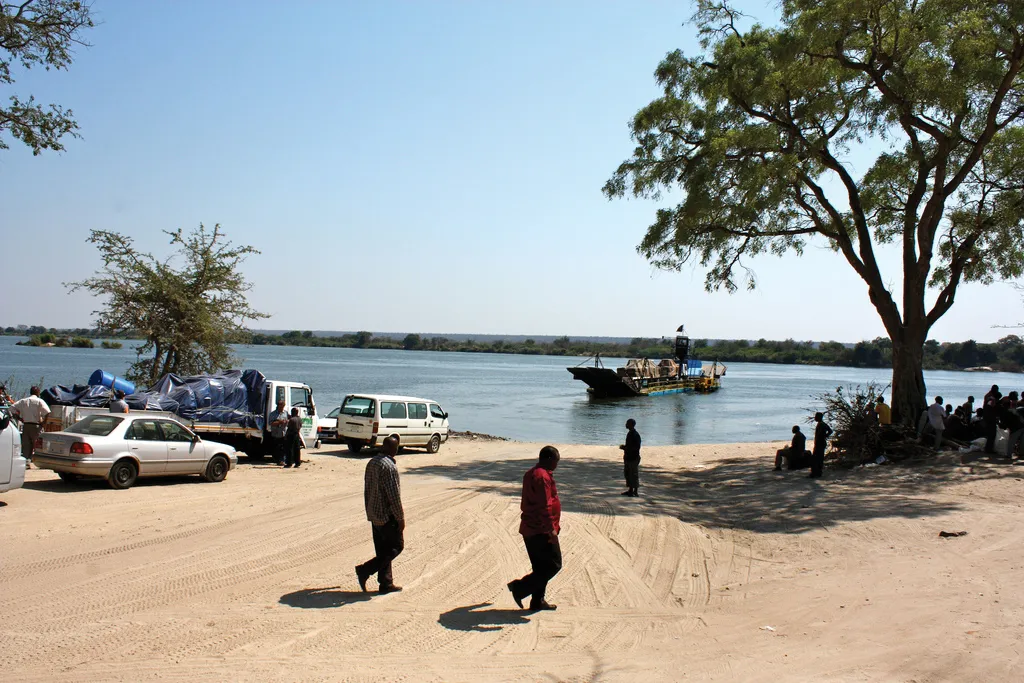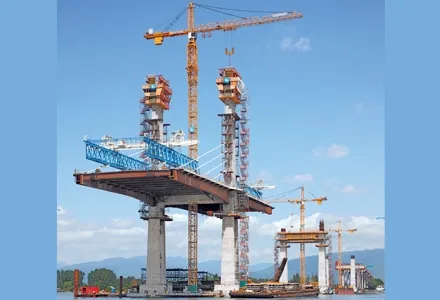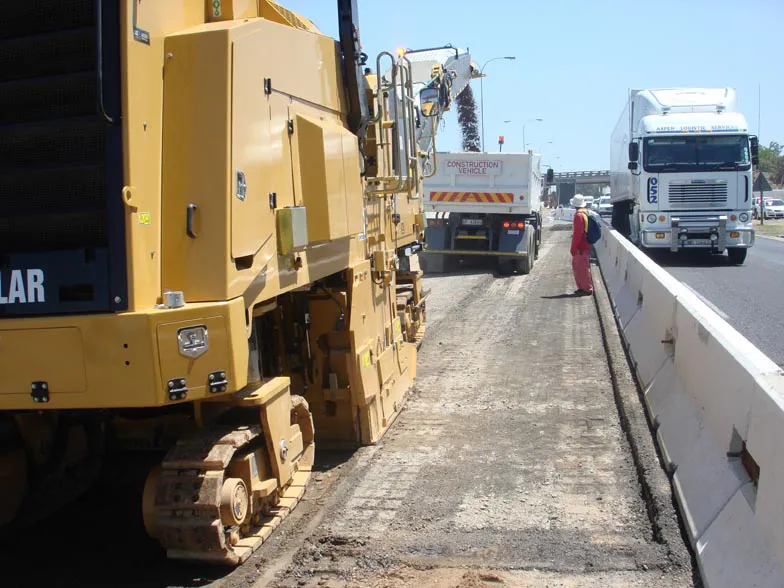Representing an investment of around US$113 million, Botswana’s A1 national road between Tonota and Francistown is undergoing a major upgrade This single-lane section is being progressively transformed into a north- and southbound dual carriageway, crossing four existing river bridges along the way. A strategically important transportation route for both Botswana and the southern African region, the A1 passes through Francistown, the nation’s second largest city, heading northwards to end at the Zimbabwe b
June 30, 2014
Read time: 4 mins

Representing an investment of around US$113 million, Botswana’s A1 national road between Tonota and Francistown is undergoing a major upgrade
This single-lane section is being progressively transformed into a north- and southbound dual carriageway, crossing four existing river bridges along the way.
A strategically important transportation route for both Botswana and the southern African region, the A1 passes through Francistown, the nation’s second largest city, heading northwards to end at the Zimbabwe border some 90km distant. From there commercial traffic continues on to destinations that include Zambia and the DRC.
The contract for the reconstruction of the Tonota to Francistown route, covering a distance of approximately 30km, was awarded to China Railway Seventh Group Botswana (CRSG Botswana) in August 2012 by Botswana’s Ministry of Transport and Communications, Roads Department. The 30-month construction programme commenced in May 2013 following an initial six-month mobilisation period entailing the relocation of water, sewage, telecommunication and electrical services. The consulting engineers are Pula Consultants, based in Botswana.
In addition to the installation of three major in-situ box culverts to cater for the extended pavement width, a number of simply supported independent bridges are being constructed alongside the existing Tholodi, Shashe and Bodumatau. The Tati River Bridge on the outskirts of Francistown is the exception. Here the structure is being widened equally on each side from the existing width of 10.63m to the new deck width of 28.55m, maintaining the current road centreline.
Tholodi’s new carriageway bridge will be a 36.15m-long 3 x 12m Span structure. Shashe will feature a new 144.6m-long 12 x 12m Span bridge, and Bodumatau a new 24.1m-long structure with 2 x 12m spans.
All three bridges will have an overall deck width of 11m with a road width between parapets of 10.4m on a 2,5% crossfall. Bridge deck Cross-sections consist of precast, ordinarily reinforced inverted T-Type beams with in-situ concrete between and on top, providing an overall deck thickness of 710mm. Tati River Bridge, measuring 108.45m in length, will also employ precast beams for the deck widening.
General rehabilitation and maintenance of the existing bridges is also being undertaken, along with the construction of concrete New Jersey type parapets that will replace existing steel handrails. New and existing bridges will be surfaced with a 50mm thick asphalt overlay.
Running in parallel with the bridge programme, road works along the Tonata to Francistown section are extensive. In addition to new roadbed preparation, construction of in-situ reworked and new cement stabilised lower and upper sub-base layers form a major portion of the contract.
CRSG’s scope of works also includes the widening of existing cuts and fills, benching into old fills or the construction of new cuts and fills; Plus horizontal and/or vertical realignment of the existing road in order to improve design speed, which is generally 120km/h along rural sections, and 80 – 60 km/h through built-up areas.
The existing Thapama Traffic Circle within Francistown will also be remodelled as a grade separated intersection, together with the construction of two access roads.
New construction, as well as reconstruction of the existing pavement is being carried out by a178 Caterpillar RM300, which forms the critical path of the road contracts programme. Sold and supported by local dealer Barloworld Equipment, the RM300 is working alongside CRSG Botswana’s predominately CAT earthmoving fleet, comprising graders, excavators and rollers.
In addition to its RM300 deployed on the A1, CRSG Botswana also has a CAT RM500 deployed in Zambia, where the company is currently working on a range of construction projects. According to CRSG, both machines are providing good production results with high availability.
Wholly owned by China Railway Group Limited, CRSG has established a strong presence on the African continent, with subsidiaries formed in Botswana, Zambia, Mozambique, Tanzania, Uganda, Ethiopia, Senegal, and Sierra Leone.
The Tonota to Francistown project is the second Botswana contract awarded to CRSG. The first, valued at around $21.8 million, was completed in 2011, entailing the upgrading of a 38km gravel section between Ngoma and Kachikau to a bitumen double-seal single-lane riding surface, which was officially opened in December of that year.
This single-lane section is being progressively transformed into a north- and southbound dual carriageway, crossing four existing river bridges along the way.
A strategically important transportation route for both Botswana and the southern African region, the A1 passes through Francistown, the nation’s second largest city, heading northwards to end at the Zimbabwe border some 90km distant. From there commercial traffic continues on to destinations that include Zambia and the DRC.
The contract for the reconstruction of the Tonota to Francistown route, covering a distance of approximately 30km, was awarded to China Railway Seventh Group Botswana (CRSG Botswana) in August 2012 by Botswana’s Ministry of Transport and Communications, Roads Department. The 30-month construction programme commenced in May 2013 following an initial six-month mobilisation period entailing the relocation of water, sewage, telecommunication and electrical services. The consulting engineers are Pula Consultants, based in Botswana.
In addition to the installation of three major in-situ box culverts to cater for the extended pavement width, a number of simply supported independent bridges are being constructed alongside the existing Tholodi, Shashe and Bodumatau. The Tati River Bridge on the outskirts of Francistown is the exception. Here the structure is being widened equally on each side from the existing width of 10.63m to the new deck width of 28.55m, maintaining the current road centreline.
Tholodi’s new carriageway bridge will be a 36.15m-long 3 x 12m Span structure. Shashe will feature a new 144.6m-long 12 x 12m Span bridge, and Bodumatau a new 24.1m-long structure with 2 x 12m spans.
All three bridges will have an overall deck width of 11m with a road width between parapets of 10.4m on a 2,5% crossfall. Bridge deck Cross-sections consist of precast, ordinarily reinforced inverted T-Type beams with in-situ concrete between and on top, providing an overall deck thickness of 710mm. Tati River Bridge, measuring 108.45m in length, will also employ precast beams for the deck widening.
General rehabilitation and maintenance of the existing bridges is also being undertaken, along with the construction of concrete New Jersey type parapets that will replace existing steel handrails. New and existing bridges will be surfaced with a 50mm thick asphalt overlay.
Running in parallel with the bridge programme, road works along the Tonata to Francistown section are extensive. In addition to new roadbed preparation, construction of in-situ reworked and new cement stabilised lower and upper sub-base layers form a major portion of the contract.
CRSG’s scope of works also includes the widening of existing cuts and fills, benching into old fills or the construction of new cuts and fills; Plus horizontal and/or vertical realignment of the existing road in order to improve design speed, which is generally 120km/h along rural sections, and 80 – 60 km/h through built-up areas.
The existing Thapama Traffic Circle within Francistown will also be remodelled as a grade separated intersection, together with the construction of two access roads.
New construction, as well as reconstruction of the existing pavement is being carried out by a
In addition to its RM300 deployed on the A1, CRSG Botswana also has a CAT RM500 deployed in Zambia, where the company is currently working on a range of construction projects. According to CRSG, both machines are providing good production results with high availability.
Wholly owned by China Railway Group Limited, CRSG has established a strong presence on the African continent, with subsidiaries formed in Botswana, Zambia, Mozambique, Tanzania, Uganda, Ethiopia, Senegal, and Sierra Leone.
The Tonota to Francistown project is the second Botswana contract awarded to CRSG. The first, valued at around $21.8 million, was completed in 2011, entailing the upgrading of a 38km gravel section between Ngoma and Kachikau to a bitumen double-seal single-lane riding surface, which was officially opened in December of that year.








